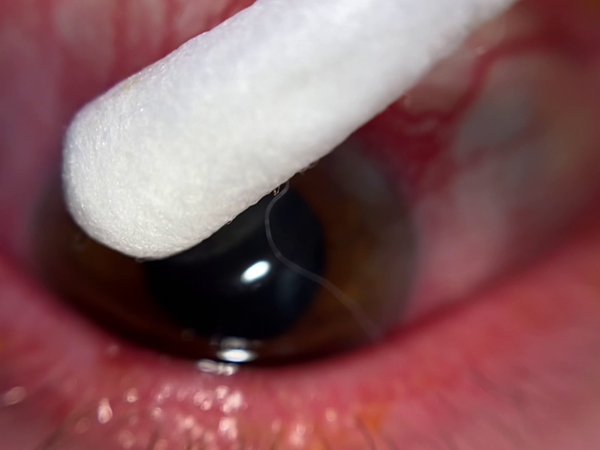Improving polymerase chain reaction diagnostic rates for herpes simplex keratitis: results of a pilot study
Main Article Content
Abstract
Background
Laboratory confirmation is crucial for diagnosis and management of herpes simplex virus (HSV) keratitis. However, the sensitivity of polymerase chain reaction (PCR) in keratitis is low (25%) compared with that of mucocutaneous disease (75%). We developed an educational intervention aimed at improving the diagnostic yield of PCR.
Methods
The medical records of keratitis cases seen at the emergency department of a London tertiary ophthalmic referral hospital over two distinct periods, before and after an educational program on swab technique, were reviewed retrospectively.
Results
A total of 252 HSV cases were included. Increases in the laboratory-confirmed diagnosis of HSV-1 were observed, in both first presentations (11.1%-57.7%) and recurrent cases (20%-57.6%). The rate of positive HSV-1 PCR in eyes with an epithelial defect increased from 19% pre-intervention to 62% post intervention. Notably, 3% were positive for varicella zoster virus DNA, and there was a single case of Acanthamoeba keratitis.
Conclusion
Our results suggest that, with proper swabbing technique, PCR may be more sensitive than previously reported.
Downloads
Article Details

This work is licensed under a Creative Commons Attribution-NonCommercial-NoDerivatives 4.0 International License.
References
Liesegang TJ. Herpes simplex virus epidemiology and ocular importance. Cornea 2001;20:1-13. DOI: https://doi.org/10.1097/00003226-200101000-00001
McCormick I, James C, Welton NJ, et al. incidence of herpes simplex virus keratitis and other ocular disease: global review and estimates. Ophthalmic Epidemiol 2022;29:353-62. DOI: https://doi.org/10.1080/09286586.2021.1962919
James C, Harfouche M, Welton NJ, et al. Herpes simplex virus: global infection prevalence and incidence estimates, 2016. Bull World Health Organ 2020;98:315-29. DOI: https://doi.org/10.2471/BLT.19.237149
Sanchez S, Faraj LA, Wajnsztajn D, Dart JKG, Milligan AL. Acanthamoeba more commonly causes epithelial keratitis than herpes simplex in South-East England contact lens users. Infection 2022;50:1619-22. DOI: https://doi.org/10.1007/s15010-022-01857-0
Adhin MR, Grunberg MG, Labadie-Bracho M, Pawiroredjo J. Incidence of Alpha-Herpes virus induced ocular disease in Suriname. J Med Virol 2012;84:1937-42. DOI: https://doi.org/10.1002/jmv.23414
Brunner M, Somerville T, Corless CE, et al. Use of a corneal impression membrane and PCR for the detection of herpes simplex virus type-1. J Med Microbiol 2019;68:1324-9.
Satpathy G, Behera HS, Sharma A, et al. A 20-year experience of ocular herpes virus detection using immunofluorescence and polymerase chain reaction. Clin Exp Optom 2018;101:648-51. DOI: https://doi.org/10.1111/cxo.12669
Hoarau G, Haigh O, Vauloup-Fellous C, et al. Diagnostic performance of real-time quantitative PCR in tear samples in various subtypes of herpes simplex keratitis. J Clin Microbiol 2023;61:e0088523. DOI: https://doi.org/10.1128/jcm.00885-23
Brunner M, Somerville T, Corless CE, et al. Use of a corneal impression membrane and PCR for the detection of herpes simplex virus type-1. J Med Microbiol 2019;68:1324-9. DOI: https://doi.org/10.1099/jmm.0.001041
Satpathy G, Mishra AK, Tandon R, et al. Evaluation of tear samples for Herpes Simplex Virus 1 (HSV) detection in suspected cases of viral keratitis using PCR assay and conventional laboratory diagnostic tools. Br J Ophthalmol 2011;95:415-8. DOI: https://doi.org/10.1136/bjo.2010.191049




